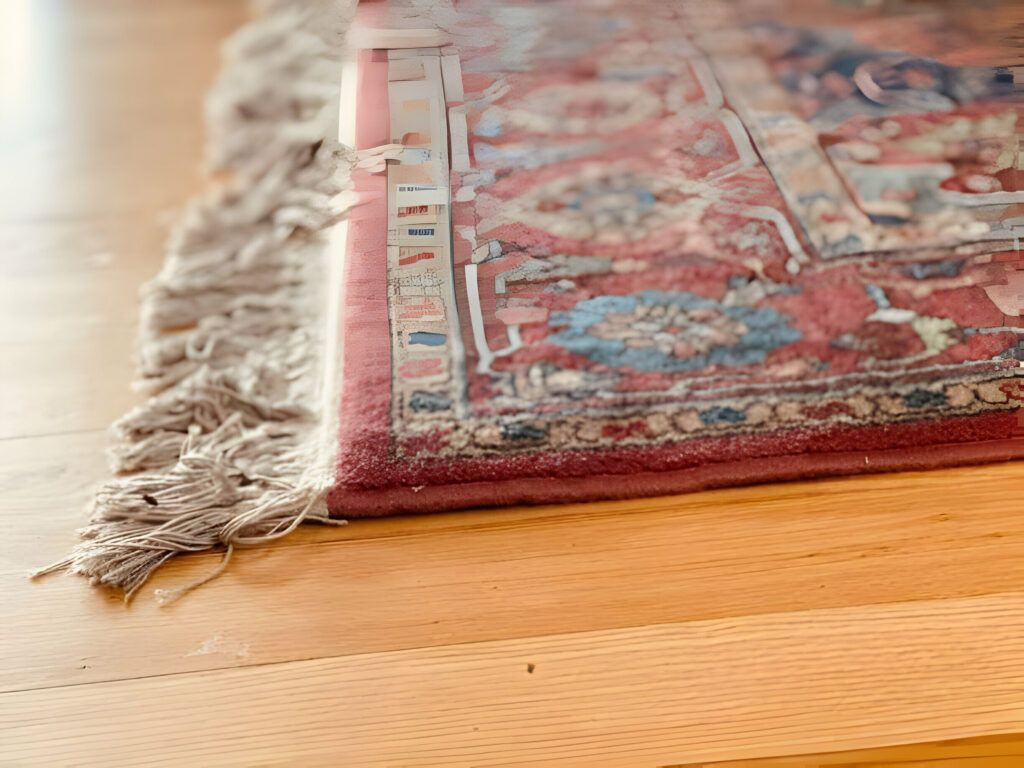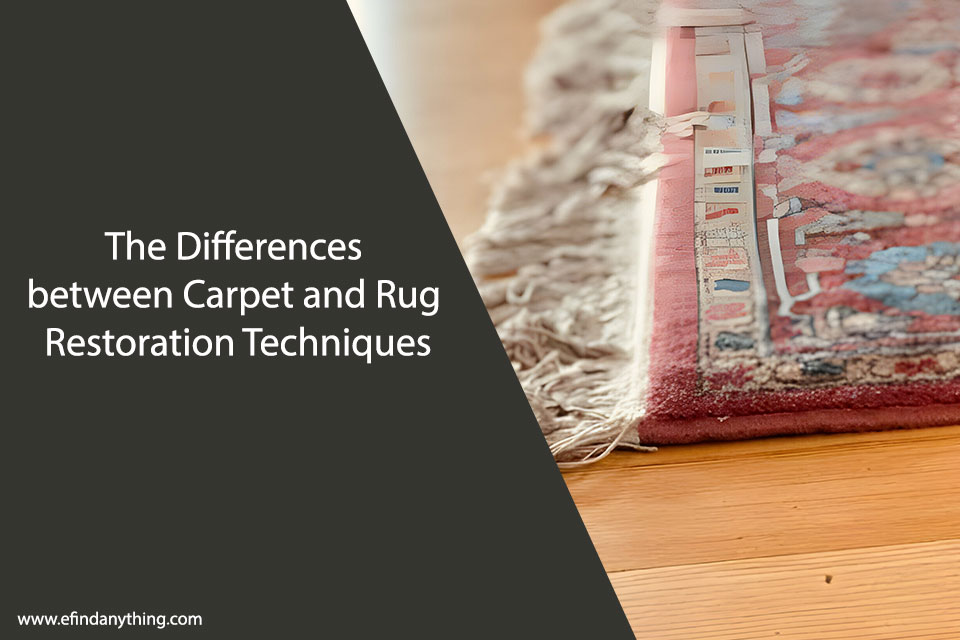
Carpet and rug restoration is both an art and a skill. It breathes new life into your beloved pieces, making them look brand new.
Rug restoration, in particular, is detailed work that can fix, wear, tear, or age-related issues. It’s fascinating to see the transformation.
Not many people know the difference between rug restoration and simply buying a new one. Restoration is about keeping the story and personality of your rug alive.
In this article, we’ll explore the techniques used for carpet and rug restoration, how they differ from each other, and why it’s worth investing in the process.
Table of Contents
Size and Handling
Carpets are generally larger and installed wall-to-wall, making restoration often more challenging due to their size and immobility. Restoration might involve spot treatment or entire section replacement, and it’s crucial to handle the carpet with care to not cause additional damage.
Rugs, on the other hand, are smaller and easier to move around. This makes restoration techniques more manageable, and rugs are typically treated in their entirety rather than just specific sections. The size of the rug also allows for a more intricate and detailed restoration process.
Repair and Restoration Techniques
Carpet restoration experts often compare fixing carpets to healing wounds. They have to be super careful to match the colors and patterns.
It’s a real skill to weave in new threads so you can’t see where the old ends and the new begins. They also fix the frayed edges that come from lots of feet walking over them.
With rug restoration, it’s like giving them a makeover. Specialists can take out the bad parts that might have holes or are too worn out and put in fresh bits that look the same. It takes a good eye and a steady hand to make everything look as good as new, keeping your rug’s charm while making it strong again.
Backing and Padding Replacement
Carpets often have backing and padding materials that may need replacement due to damage or wear. This can be a complex process, especially for wall-to-wall carpets.
It requires experience and skill to remove the old backing and padding without causing any harm to the carpet fibers. The new materials must then be carefully attached, ensuring a smooth and seamless finish.
Rugs typically come with separate backing and padding that can easily be replaced. This step is essential in restoring the rug’s stability, especially if it’s an antique piece. The new backing and padding provide support, preventing the rug from slipping and sliding.
Cleaning and Stain Removal
Effective cleaning is crucial in carpet and rug restoration. It’s the first step in bringing back their former glory.
Special cleaning solutions are used to treat stains without damaging the fibers. This step is delicate; it requires knowledge and the right touch.
Stain removal is also an essential part of the restoration process. Professional rug cleaning services can successfully remove deep stains from carpets without harming the fibers by using certain stain removers and procedures.
Rugs, on the other hand, may require more gentle methods for stain removal such as soaking in a solution or using natural remedies like vinegar and baking soda.
Color Restoration and Dyeing Techniques
Rugs may be more frequently subjected to color restoration processes due to their smaller size and ease of handling. This can involve spot dyeing to fix the color fading or complete dyeing to change the overall appearance of the rug. It’s essential to use quality dyes and techniques to ensure that the restored color blends seamlessly with the rest of the rug.
Carpet restoration may also involve color restoration, but it is typically less common due to its size and installation process. However, new technology allows for color correction and touch-ups without having to remove the carpet from its location.
Cost and Time
Restoring carpets and rugs isn’t the same as buying new ones. It can be expensive, but it’s worth it to keep your pieces special.
The price depends on how big and messed up they are. And if there’s fancy stuff like silk, it’ll cost more. You’re not just paying for the fix; you’re paying for your rug’s history and soul to last longer.
Time is another thing to think about. Small fixes can be quick, taking maybe a few days. But if your carpet or rug has seen better days and needs lots of work, get ready to wait weeks.
Odor Elimination
Carpets and rugs may also develop unpleasant odors over time. This can be caused by moisture, pet accidents, or other factors.
Odor elimination techniques are an essential part of restoring the freshness and cleanliness of these textiles. Specialized cleaning solutions and equipment are used to remove any lingering smells, leaving your carpets and rugs smelling clean and fresh.
Carpet requires more extensive odor elimination processes due to their larger size and potential for deep-seated odors. On the other hand, rug restoration typically involves smaller areas, making it easier to target and eliminate odors.
Drying and Finishing Touches
After all the necessary restoration processes, drying is crucial to avoid any potential damage from moisture. Specialized equipment is used to dry carpets and rugs thoroughly while ensuring that their shape and integrity are maintained.
Rugs are easier to dry and often require less time compared to carpets. Once fully dried, the last finishing touches are added, such as trimming frayed edges or adding protective coatings for added durability. These final steps complete the restoration process, and your beloved carpet or rug is ready to be displayed in its renewed glory.
The Lasting Value of Rug Restoration
The art of rug restoration goes beyond mere repair. It’s about preserving the unique narrative woven into your textile piece, echoing memories and heritage through each restored thread.
Rug restoration, therefore, stands as a testament to tradition and durability, ensuring that your rug’s legacy can be admired by future generations. Its investment values both the aesthetic and historical significance of your cherished rugs, embodying a blend of beauty and longevity that mere replacements cannot replicate.
Did this article help you? If so, take a look at some of our other blog posts for more informative reads.





